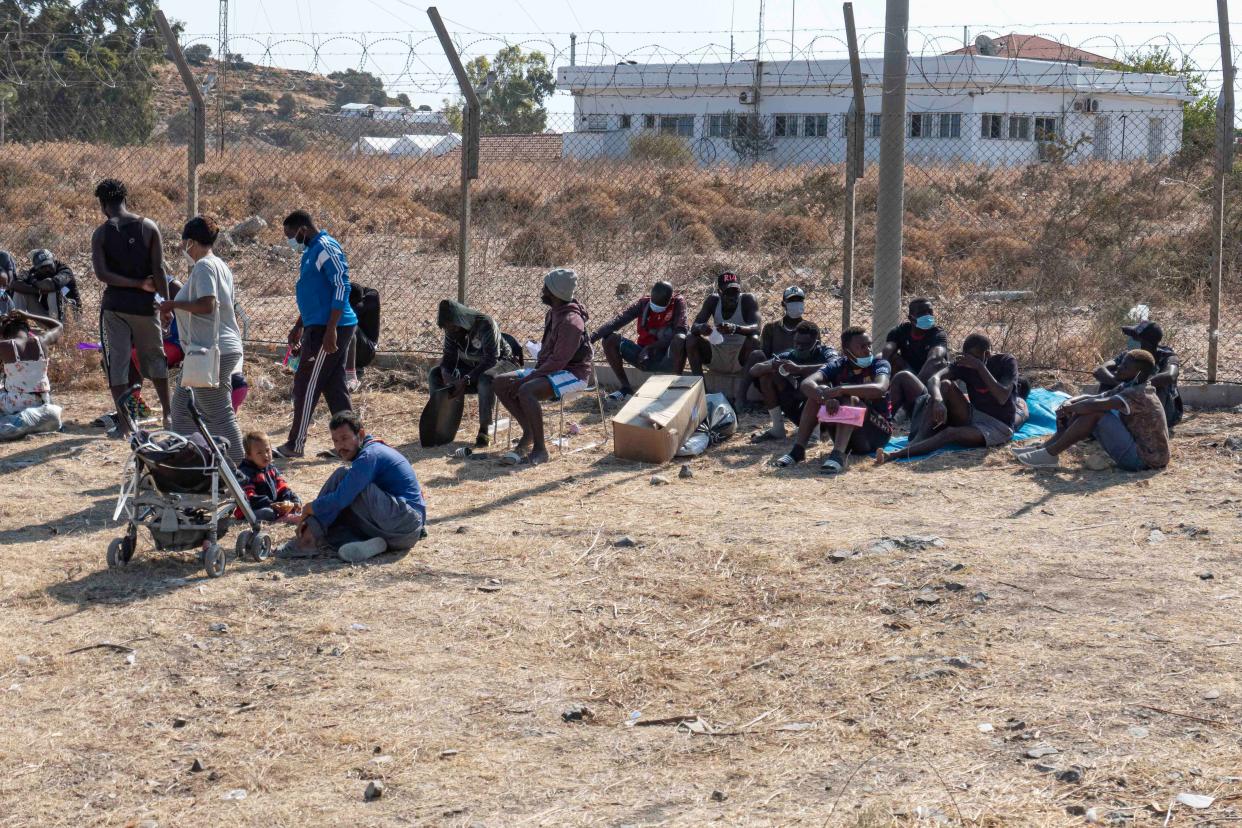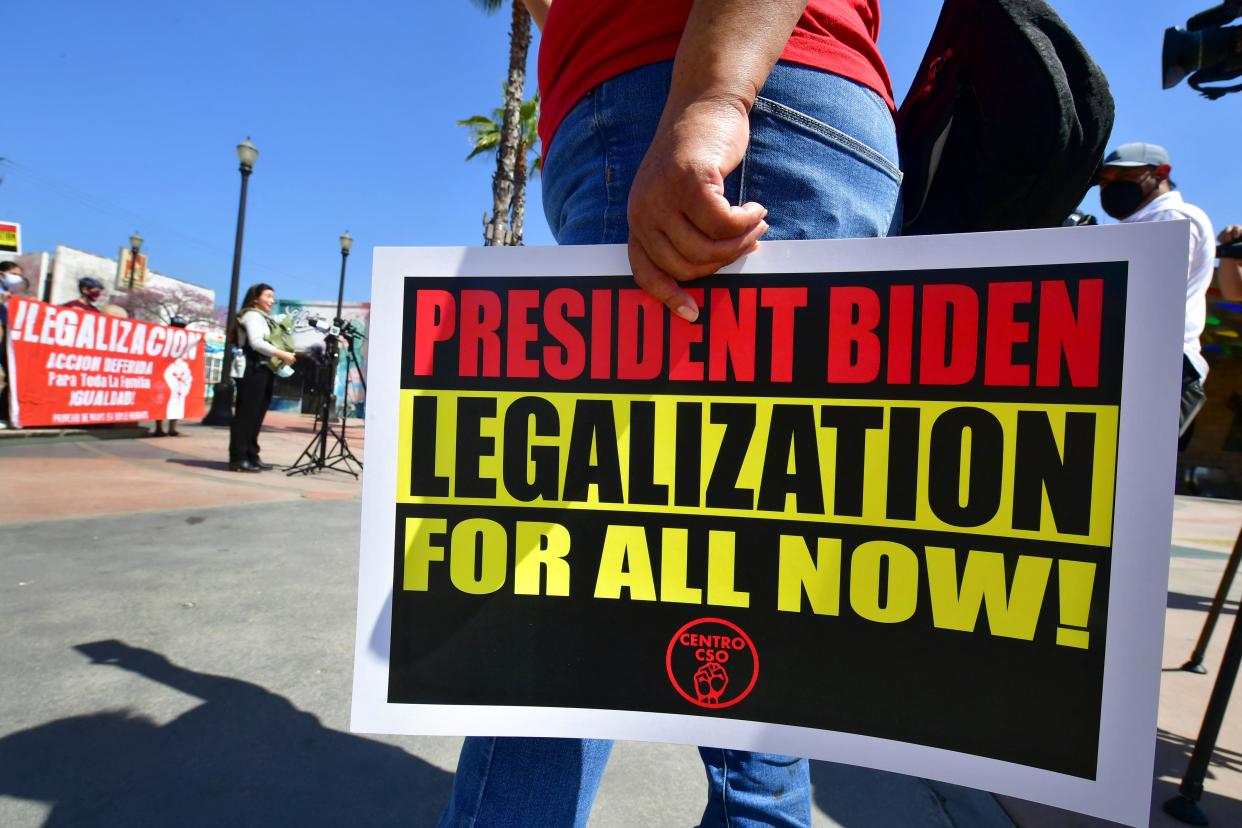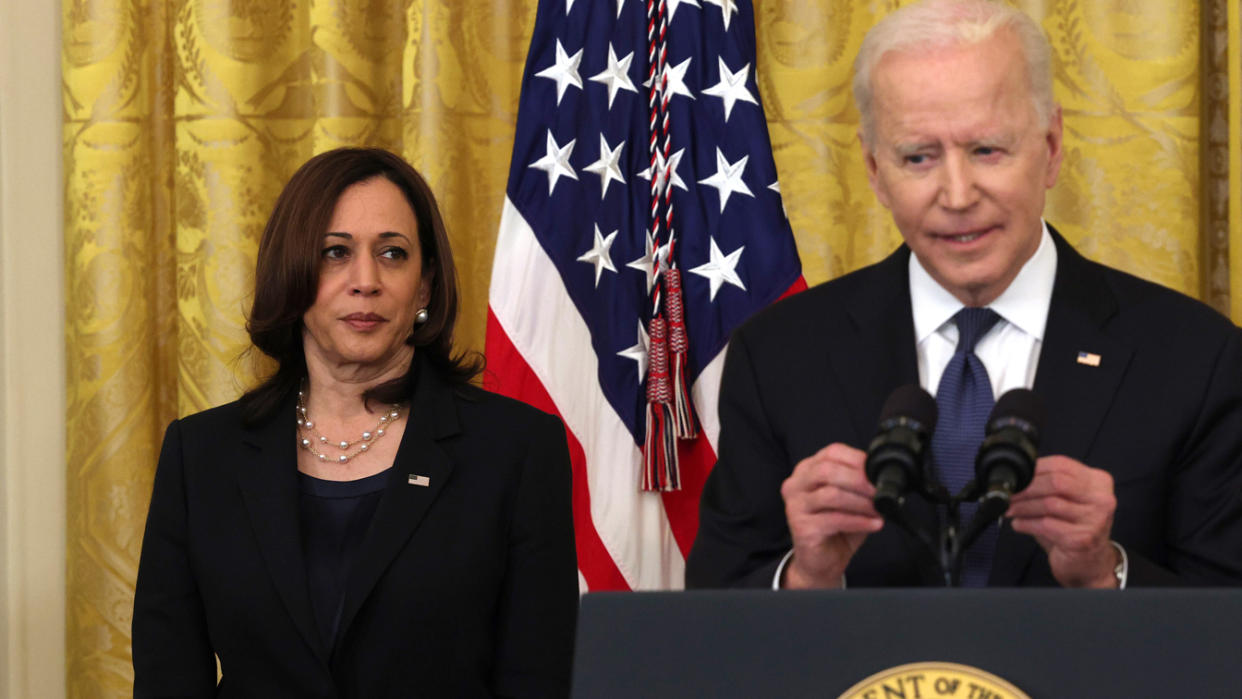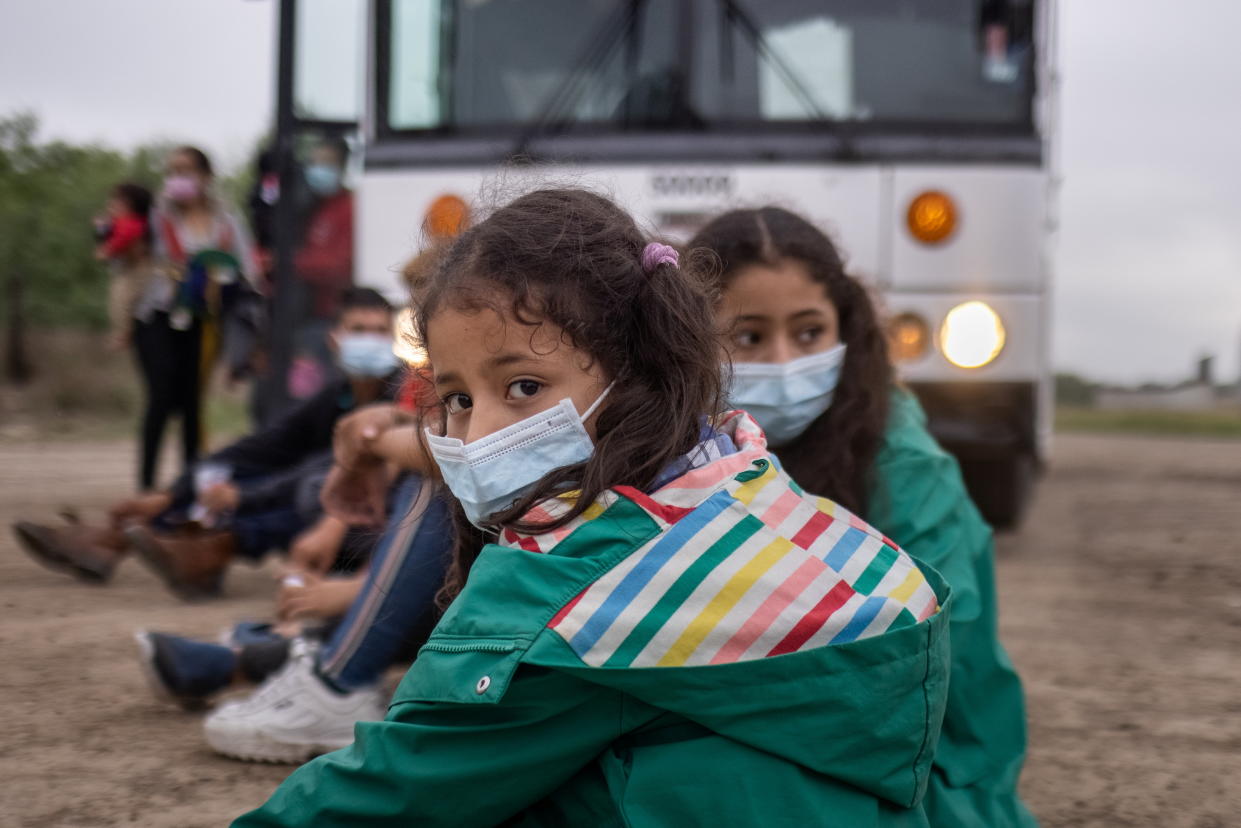Is Biden getting the border wrong? Experts cast doubt on plans to address 'root causes' of migration
WASHINGTON — In a recent meeting with the Congressional Hispanic Caucus, Vice President Kamala Harris outlined some of the problems she and President Biden plan to tackle in Central America: the impact of extreme weather events like hurricanes and droughts, the sustainability of the agricultural sector and political corruption.
All these are what the administration has described as the “root causes” of migration, the factors driving hundreds of thousands of people annually toward the U.S. border with Mexico. Mitigate those factors, the thinking goes, and the reasons motivating people to make the dangerous journey will vanish.
“We have to give people some sense of hope; that if they stay, help is on the way,” said Harris, who is heading the White House migration task force, in an interview with CNN.

The administration has pledged $4 billion over four years to eradicating the conditions that give rise to hopelessness in the first place.
The problem with this approach is that there is no solid evidence it works, at least in stopping migration. In fact, it may achieve the opposite effect, drawing more people to the United States, according to those who have studied the issue. “You manage migration with migration management policy, not with development assistance,” Susan Fratzke, senior policy analyst at the nonpartisan Migration Policy Institute, told Yahoo News.
In a 2018 paper, Fratzke and co-author Brian Salant argued that migration “may actually increase as a society experiences development.”
When it came to controlling the northward flow of Latin American migrants, Donald Trump’s message was simple, unapologetic and more than a little xenophobic: “We’re going to keep these people out of our country,” he said during a campaign rally in 2018. The goal was to dissuade people from coming through fear of deportation, family separation and border-control measures that included Trump’s long-promised wall.
Biden is taking the opposite approach, seeking to dissuade people from coming by making it more appealing for them to stay in their own countries.
For a presidential administration that prides itself on a combination of wonkish expertise and morality, migration presents a peculiar challenge, not to mention something of a political bind. Biden has committed to spending billions of dollars on an approach that appears unlikely to work, at least in the short term. The kind of approaches that do work, on the other hand, seem to be much more incremental than what advocates would like.

Michael Clemens, a senior fellow at the Center for Global Development, says he has briefed members of Congress and officials in the Biden administration on the conclusions of a 2018 paper he co-authored with Hannah Postel that found that “overall development — better incomes, health, and education — is, in fact, strongly associated with rising emigration.”
As people become more prosperous, they may also become more ambitious. A journey to the United States that had previously seemed too expensive and risky could seem a lot more realistic to a family that has acquired some measure of economic stability, thanks to international aid.
“There are many reasons to give foreign aid other than migration control,” Clemens told Yahoo News. “But there is a difference between support for long-term investment, which does not necessarily deter migration in the near or middle term, and the kinds of more targeted aid that can help families deal with periodic spikes in migration, like crop failures and outbreaks of violence.”
Clemens and Postel calculated that for a poor country to see sustained economic growth stemming directly from aid could take 70 years. Biden and Harris are probably banking on somewhat more immediate results.
Clemens, Fratzke and other researchers who have studied the issue draw at least some of their conclusions from Europe’s unprecedented influx of 1.3 million migrants in 2015, as well as another 1.2 million in 2016. Many of those migrants were fleeing war in Syria, Afghanistan or Iraq. But there were also hundreds of thousands from Africa, part of a more consistent migratory pattern into Europe.

In November 2015, European and African leaders met on Malta, an island in the Mediterranean, which has encompassed the sea route that fleeing migrants have frequently taken.
At the summit, African nations agreed to tighten their borders in exchange for development aid. That aid would come through the EU African Emergency Trust Fund for Africa, seeded with 1.8 billion euros from European Union member states. Jean-Claude Juncker, head of the European Commission, made clear that the fund was not simply for border control (as some activists feared) but rather “for addressing the root causes of irregular migration and promoting economic and equal opportunities, security and development.”
That wasn’t going to happen overnight. In 2017, there were more migrants fleeing Africa than there had been in 2015. “Funding takes a long time to set up,” explains Fratzke, describing the horizon as “a matter of years.”
Development also requires cooperation across continents, with governments and organizations working in concert across gulfs both literal and metaphorical. “The evidence we have,” Clemens and Postel write, “implies that aid would need to operate in unprecedented ways, at much higher levels of funding, over generations, to greatly affect some of the most important plausible drivers of emigration.”
Border security is a more clear-cut enterprise. What did seem to sharply decrease the flow of African migrants to Europe was what one report by a humanitarian group described as “massive acceleration” of a policy called “border externalization,” in which European countries had African partners impose tougher migration controls, in effect outsourcing the unseemly business of keeping migrants out.

Libyan militias shooting at drowning African refugees is surely not what Juncker had in mind when he announced the Africa trust fund in 2015, but it is what reality had in store. A recent Oxfam study found that because the EU’s trust fund on African migration was initially ineffective, it succumbed to “a new and worrying trajectory for development aid that is more closely linked with donors’ migration policies, particularly stopping irregular migration.”
Donor states got impatient, unwilling to see development projects through. They thought they’d paid for an end to migration, not humanitarian projects. “Different EU countries expressed different views,” explains Clemens of the Center for Global Development. “They certainly didn't give up on root causes, but they did come to emphasize border externalization to a greater degree.”
Progressives fear that when faced with the same pressures, Biden will make the same concessions. The White House referred Yahoo News to the vice president’s office, which declined to comment on the record.
Pedro Gerson, director of an immigration policy center at Louisiana State University, has argued that for all their idealistic intentions, root-cause projects favor “unencumbered free-market capitalism,” in particular “export-oriented large-scale agribusiness and manufacturing.” There are simply not enough jobs in such industries to keep people from leaving, meaning that funding development of those industries might actually end up harming working people in Central America.
"The more powerful actors tend to get what they want," says Saskia Sassen, a scholar of globalization at Columbia University who is highly critical of how Western governments often address migration. Much like Gerson (who cites her work), she sees development aid to Central American countries going mostly to sophisticated actors with political and economic power. She says the Biden migration plan lacks serious analysis of on-the-ground conditions.

“It's true that they are trying,” Sassen told Yahoo News. “But it's such a shambles.” She seemed to be referring to both the situation in Central America and the U.S. response, both past and present.
The Biden administration has already allocated $310 million in “urgent relief” to the three Northern Triangle countries (Guatemala, El Salvador and Honduras), with $55 million for farmers and hungry children and $125 million to mitigate the effects of drought. Trump had tried to cut development aid, focusing on strengthening border controls instead.
But if Trump’s wall — across which he lobbed relentless insults at Central Americans — was a profoundly flawed approach, there is no consensus that the Biden effort is guaranteed to succeed simply because it comes with earnest humanitarian intentions. It relies, after all, on hundreds of millions of dollars flowing to notoriously corrupt governments, or to organizations that work at those governments’ behest. It relies on that money being used as intended and, finally, on individuals and families making the decision not to leave.
As a Brookings Institution brief put it, “The most important challenges will not be solved by huge amounts of money. Those are corruption and poor governance.” That brief cited a study that found $2.6 billion in prior U.S. funding to Northern Triangle countries was in part siphoned off and therefore “only minimally addressed the targeted problems.”
Biden and Harris want to address corruption and poor governance, as they have made clear. Only the fruits of those efforts won’t be evident by the 2022 congressional midterms, nor, most likely, in time for the 2024 presidential election. Or, as Harris told the Congressional Hispanic Caucus earlier this month, “We’re not going to see results overnight.”
The key word is results.

Harris is now in nearly the same position that Biden was in when Barack Obama told him in 2014 to fix the border, which looked then more or less as it does now — that is, like a complete mess. Then, as now, the White House decided on a two-pronged strategy. “We’re all committed to take both immediate steps in the crisis and long-term challenges,” Biden said at the time. “But it’s clear we have to deal with the root causes.”
Republican intransigence prevented any kind of meaningful reform, while migrants kept coming. That left Obama and Biden with few options but to institute the kinds of tough border security measures that trade long-term progress for short-term gains.
The initial $310 million allocation announced in late May acknowledged that aid has to be targeted to be effective. “I applaud these priorities,” Clemens said, though not only because the funding may cause fewer people to seek entry into the United States. “Countless people are truly suffering in the region, and delivering humanitarian assistance to them has inherent value. Second, mitigating food insecurity is likely to reduce the likelihood of surges of irregular migration.”
Harris has rejected any suggestions that the migration portfolio is politically challenging, but the 56-year-old daughter of immigrants doubtless knows that her own hopes of attaining the White House in either 2024 or 2028 rest in part on how well she handles an issue that has been described as a “political grenade.”
Republicans planning to run for president in 2024 have assailed Harris as if the situation at the border were of her own making. When she went to New Hampshire last month, Sen. Ted Cruz of Texas quipped that the vice president’s “GPS got confused,” sending her to “the wrong border.”

A more substantive charge is that Biden all but invited migrants to come by signaling that there would be no room for Trumpian machismo at the border. “The Biden administration created the border crisis because their words and actions encouraged desperate people to make an incredibly dangerous journey,” Sen. Marco Rubio, R-Fla., another potential 2024 candidate, told Yahoo News. “Making Guatemala, Honduras and El Salvador more climate-resilient won’t solve this problem. And it will take years, if not decades, to address the corruption, violence and poverty that plague these nations.”
In April, Biden said he wouldn’t devote federal funds to building Trump’s border wall. Many immigration experts maintain that the wall had been folly to begin with, but Trump thought the optics were more important than the particulars. The new administration rejects such stunts, but it will soon find its own ideas put to the test.
____
Read more from Yahoo News:


